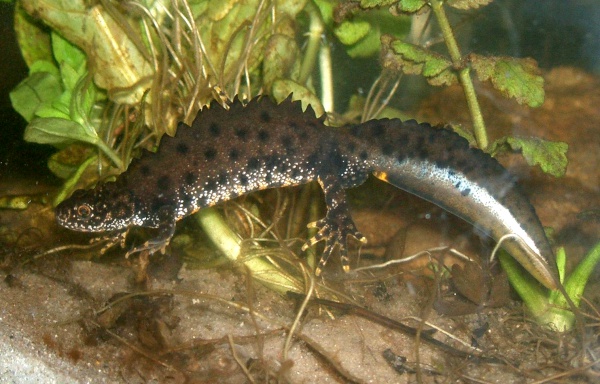Facts About Northern crested newt
The northern crested newt, also known as the great crested newt or warty newt, is a captivating amphibian native to Great Britain, northern and central Europe, and parts of Western Siberia. This species can reach up to 16 cm in length, with females generally being slightly larger than males. They have dark brown backs and sides, while their bellies are a bright yellow to orange adorned with dark blotches. During the breeding season, males develop a distinctive jagged crest along their back and tail.
For most of the year, these newts inhabit terrestrial environments, typically favoring forested lowland areas. As spring arrives, they migrate to larger, fish-free ponds to breed. Male newts engage in elaborate courtship displays to attract females and deposit spermatophores for fertilization. Females lay around 200 eggs, meticulously folding each one into water plants. The larvae spend two to four months developing in the water before transforming into land-dwelling juveniles. Both the larvae and the terrestrial newts primarily feed on invertebrates.
Interestingly, what were once considered subspecies of the northern crested newt are now recognized as separate species within the genus Triturus. Despite being classified as "Least Concern" by the IUCN, the populations of the northern crested newt are declining, mainly due to habitat destruction from urban development. Consequently, the species is strictly protected in most European countries.
First described in 1768, the northern crested newt has had over 40 different scientific names over the years. Today, there are seven accepted species of crested newts, with the northern crested newt being the most widespread.
These newts prefer forested habitats and fish-free ponds for breeding. They have a complex life cycle that involves transitioning between aquatic and terrestrial environments. The larvae develop in water before maturing into terrestrial adults.
The northern crested newt faces several threats, including habitat destruction, the introduction of fish and crayfish into breeding ponds, collection for the pet trade, and hybridization with other crested newt species. Conservation efforts focus on preserving habitats, controlling introduced species, and creating new breeding ponds. The species is protected under various international and European regulations to ensure its survival.

 North Macedonia
North Macedonia